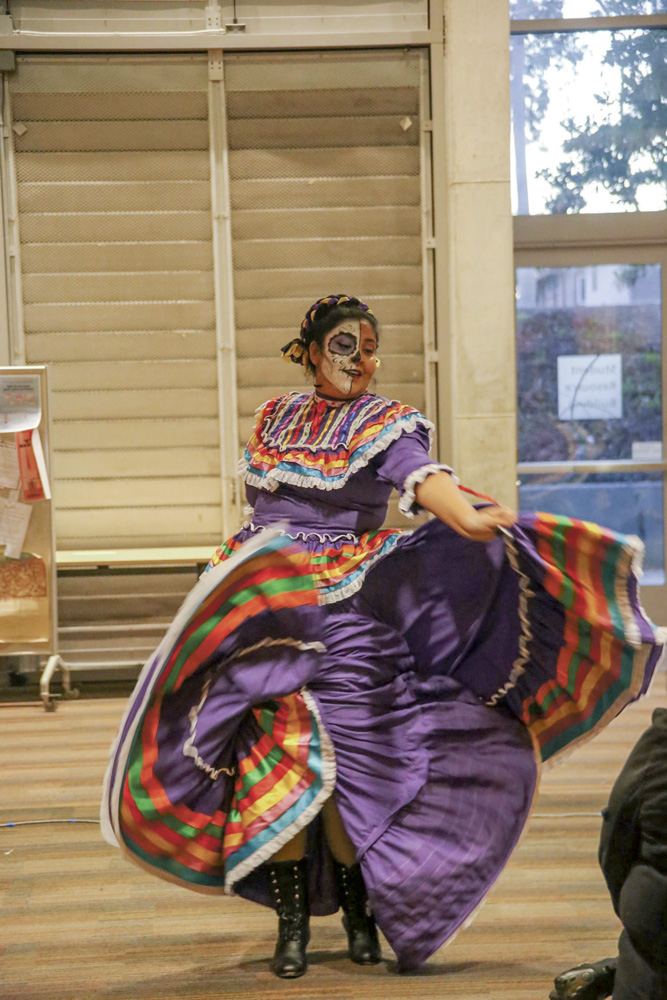
Ramya Ponnambalam
Walking into the room, I’m instantly aware of the happy atmosphere. The aroma of home cooked food wafts through the air; people line up to grab tamales, pastries, and warm, steaming cups of hot chocolate. Altars are being set up, with pictures of the departed surrounded by skulls, figurines, paintings, and lots of bright colors. People gather at small tables, chatting happily, painting decorations and frames for pictures of their loved ones. A band played cheery music while people sat perfectly still to get their faces transformed into intricate skulls.
This is Día de los Muertos, a Mexican holiday where people celebrate to honor their deceased loved ones. Here at the University of California, Santa Barbara, students, families and curious outsiders have come together to celebrate this important holiday together.
The celebration starts as the strong smell of incense floods the Student Resource Building. A group dressed up in full decorative costumes runs up to center stage, blowing a conch, dancing and stomping their feet to the beat of a drum. They’re a group of concheros dancers, practicing an art form that has dated back to the colonial period with indigenous and Mexican influences. Everything has a meaning in their dances; each of their five dances is meant to honor a different concept, the flowers placed across the floor represent love, and the incense blesses and cleanses everyone there.
The dances intend to remind people to connect to their roots; in the same way, they stay in touch with their culture through concheros. After that came a group of dancers who danced the Jarabe Tapatio, better known internationally as the Mexican Hat Dance. The women danced beautifully to the upbeat music, twirling their colorful skirts in beautifully complicated movements.
The event especially promoted a strong sense of community and culture. A silent auction sent all its proceeds to the Dream Scholars Foundation, so the event directly gave back to the community. It also fostered a sense of community for a lot of students who might be missing the community and sense of culture they would have had back home.
A lot of people celebrate on days that aren’t officially holidays, and going to college means often times having to celebrate away from home. Events like these give students a way to stay in touch with their culture and celebrate even if they’re far away from home. And even just a little reminder of home can help ease away homesickness.
While Día de los Muertos is a Mexican celebration, the event was open to everyone, and it was filled with all different kinds of people. Today people often argue about where exactly to draw the line between cultural appropriation and appreciation, so it was nice to see an event that was an example of cultural appreciation. People were invited to see and experience Mexican culture, and the whole event was a welcomed, willing cultural exchange, a very nice change of pace from what we often see in the news.
This theme of unity was very prevalent at Día de los Muertos, from the framed pictures of Malcolm X and Martin Luther King Jr. to the blessing of the Sioux Tribe and all the protestors at Standing Rock. Día de los Muertos is a celebration of those who have passed, but it was also a reminder to remember your heritage as well as a reminder that we are, in the words of a concheros dancer, “all one people.”










